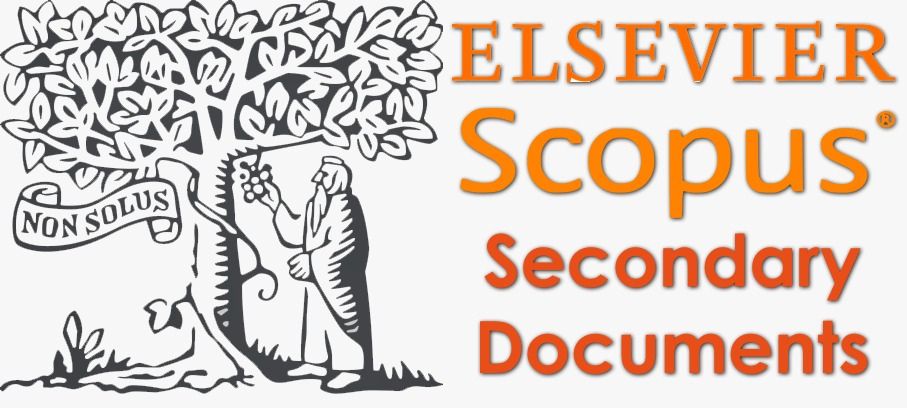INTELLIGENT SOFTWARE-AIDED CONTACT TRACING FRAMEWORK: TOWARDS REAL-TIME MODEL-DRIVEN PREDICTION OF COVID-19 CASES IN NIGERIA
DOI:
https://doi.org/10.15282/ijsecs.7.1.2021.7.0083Keywords:
COVID-19 Prediction, Contact Tracing, Contact Routing, Routing Algorithm, FirebaseAbstract
As many countries around the world are trying to live with the deadly coronavirus by adhering to the safety measures put in place by their government as regulated by World Health Organization (WHO), it becomes very vital to continuously trace patients with COVID-19 symptoms for isolation, quarantine and treatment. In this work, an intelligent software-aided contact tracing for real-time model-driven prediction of COVID-19 cases is proposed utilizing COVID-19 dataset from kaggle.com. The dataset is preprocessed using One-Hot encoding and Principal Component Analysis. Isolation Forest algorithm is used to train and predict COVID-19 cases. The performance of the model is evaluated using Accuracy, Precision, Recall and F1-Score. The intelligent software-aided contact tracing framework has four layers: symptoms, modeling/prediction, cloud storage/contact routing and contact tracers. The contact tracing system is an android application that receives symptom values, predict it and automatically send the prediction result together with user’s contact and location details to the closest contact tracer via the Firebase real-time database. The closest contact tracer is determined by employing a dynamic routing algorithm (contact routing algorithm) that uses Open Shortest Path First (OSPF) protocol to compute the distance between two geographic locations (user and contact tracer) and chooses a contact tracer with shortest distance to the patient utilizing a unicast routing technique (routing a patient to a contact tracer in a one-to-one relationship). The predictive model along with the android application for software-aided contact tracing is implemented using the python, and Java programming language on Pycharm and Android Studio IDE respectively. This Framework is capable of predicting COVID-19 patients, notifying contact tracers of positive cases for proper follow-up which can subsequently curtail the spread of the virus.
References
E. Simpson., and A. Conner. (2020). “Digital contact tracing to contain the Coronavirus,” Kahn and Johns Hopkins, Digital
Contact Tracing for Pandemic Response: Ethics and Governance Guidance.
A. Soltani, R. Calo., and C. Bergstrom. (2020). “Contact tracing apps are not a solution to the COVID-19 crises,”Tech
Stream.
J. Hellewell., S. Abbott., A. Gimma, et al. (2020). “Feasibility of controlling COVID-19 outbreaks by isolation of cases and
contacts,”The Lancet Global Health, vol. 8, no. 4, pp. E488–E496, doi:10.1016/S2214-109X(20)30074-7
A. Dubov and S. Shoptawb. (2020). “The value and effects of using technology to contain the COVID-19 epidemic,”The
American Journal of Bioethics, vol. 20, no. 7, pp. 7 – 11, doi: 10.1080/15265161.2020.1764136
K. Bagchi., C. Bannan., S. Franklin., H. Hurlburt., L. Sarkesian., R. Schulman., and J. Stager. (2020). “Digital tools for
COVID-19 contact tracing: identifying and mitigating the equity, privacy and civil liberties concerns,” COVID-19 Rapid
Response Impact Initiative, White Paper 22, Edmond J. Safra Centre for Ethics, Open Technology Institute, New America,
pp. 1- 53.
S. Chen, J., Yang, W. Yang., C. Wang., and T. Bärnighausen. (2020). “COVID-19 control in China during mass population
movements at new year,” Lancet, vol. 395, pp. 764-766,doi: 10.1016/s0140-6736(20)30421-9
WHO: World Health Organization. (Accessed October 28, 2020). “Digital tools for COVID-19 contact tracing,”
WHO/2019-nCOV/Contact_Tracing/Tools-Annex/2020.1, 2020a.
WHO: World Health Organization. (2020). “Contact tracing in the context of COVID-19,” WHO/2019-
nCoV/Contact_Traciing/2020.1.
WHO: World Health Organisation. (2020). “Tracking COVID-19: contact tracing in the digital age,”.
WHO: World Health Organization. (2020). “Contact tracing,” 2020d, https://www.who.int/news-room/q-a-detail/contacttracing
S. Wang., S. Ding., and L. Xiong. (2020). “A new system for surveillance and digital contact tracing for COVID-19:
spatiotemporal reporting over network and GPS,”JMIR Mhealth and Uhealth, vol. 8, no. 6, doi:10.2196/19457
D. Halbfinger., I. Kershner., and R. Bergman. (2020).“To track coronavirus, Israel moves to tap secret trove of cell phone
data,” NY Times.
S. Garg, N. Bhatnagar., and N. Gangadharan. (2020). “A case for participatory disease surveillance of the COVID-19
pandemic in India,” JMIR Public Health Surveillance, vol. 6. no 2, e18795, doi: 10.2196/18795
J. Abeler., M. Bäcker., U. Buermeyer., and H. Zillessen. (2020). “COVID-19 contact tracing and data protection can go
together,” JMIR Mhealth Uhealth, vol. 8, no. 4, e19359, doi: 10.2196/19359
MIT Media Lab. (2020). “Safe paths: a privacy-first approach to contact tracing,” MIT News,
https://news.mit.edu/2020/safe-paths-privacy-first-approach-contact-tracing-0410
J. Horowitz., and A. Satariano. (2020). “Europe rolls uut contact tracing apps, with hope and trepidation,
https://www.nytimes.com/2020/06/16/world/europe/contacttracing-apps-europe-coronavirus.html
WHO: World Health Organization. (2020). GoData Website,https://www.who.int/godata.
S. Landau. (2020). “Looking beyond contact tracing to stop the spread,” 2020, https://www.lawfareblog.com/lookingbeyond-contact-tracing-stop-spread.
S. B. Franklin. (2020). “The right and wrong ways to use location data in the pandemic,”
https://slate.com/technology/2020/04/coronavirus-location-data-heat-maps-privacy.html.
F. Ungku. (2020). “Singapore launches contact tracing mobile app to track coronavirus infections,” Technology News,
www.reuters.com/article/us-health-coronavirus-singapore-technolo-idUSKBN2171ZQ
J. Morse. (2020). “North Dakota launched a contact-tracing app. It’s not going well,https://mashable.com/article/northdakota-contact-tracing-app.
V. Chandola., A. Banerjee., and K. Kumar. (2009). “Anomaly detection: a survey,” ACM Computing Surveys, vol. 41,
doi:10.1145/1541880.1541882.
F. T. Liu., K. M. Ting., and Z. Zhou. (2008). “ Isolation-based anomaly detection,”ACM Transactions on Knowledge
Discovery from Data, vol. 6, pp. 1–39.
E. Isong, E. Udo., and E. Nyoho. (2020). “ COVID-19 prediction: a comparative analysis of machine learning models,”
Global Scientific Journals, vol. 8, no. 10, pp. 1568 – 1594.
A. Bilinski., F. Mostashari., and J. Salomon (2020).“Modeling contact tracing strategies for COVID-19 in the context of
relaxed physical distancing measures.” Jama Network Open, vol 3, no.8, e2019217,
doi: 10.1001/jamanetworkopen.2020.19217
E. Nwawudu., A. Ikwu., U. Ikwu., N. Operah., and S. Nnorom. (2020). “Proposed design of a real-time COVID-19
pandemic contact tracing using mobile phone,”European Scientific Journal, vol. 16, no. 36, pp. 1 –
,doi: 10.19044/esj.2020.v16n36p1
S. Jian., H. Cheng., X. Huang., and D, Liu. (2020). “Contact tracing with digital assistance in Taiwan’s COVID-19 outbreak
response,” International Journal of Infectious Diseases, vol 101, pp. 348-352, doi: 10.1016/j.ijid.2020.09.1483
K. Yap., and Q. Xie. (2020). “ Personalising symptom monitoring and contact tracinge efforts through a COVID-19 Webapp. Infectious Disease of Poverty, vol 9, no. 93, pp. 1 – 4, doi: 10.1186/s40249-020-00711-5
Downloads
Published
Issue
Section
License
Copyright (c) 2021 Edward N. Udo, Etebong B. Isong, Emmanuel E. Nyoho

This work is licensed under a Creative Commons Attribution-NonCommercial 4.0 International License.







